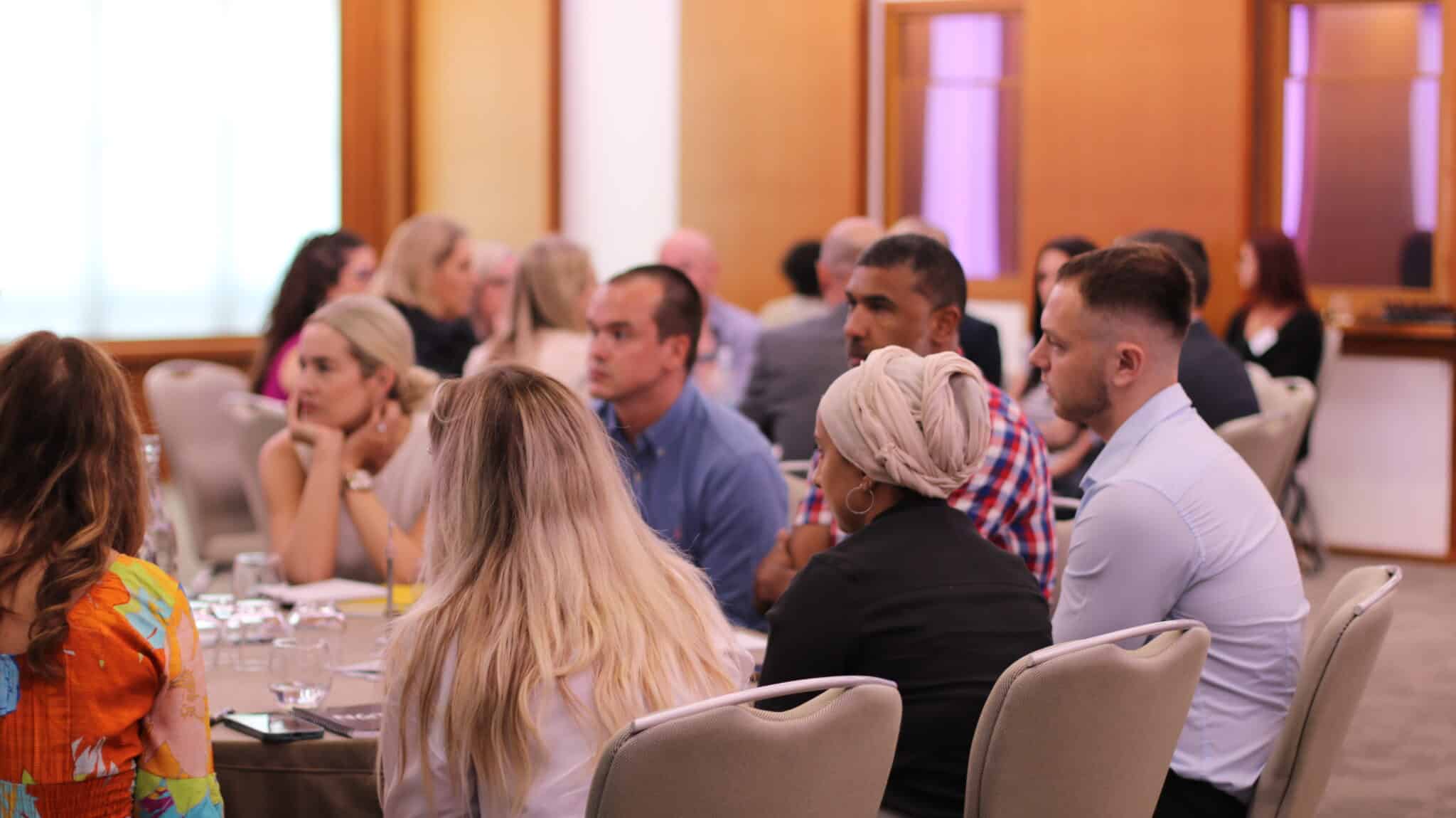Emily Shanks, Awards Executive at TALiNT Partners spoke to Navid Nazemian, CEO & Founder at Navid Nazemian Executive Coaching, and Judge for TIARA Recruitment Awards MENA.
ES: With a client list that includes esteemed organisations like KPMG, BP, and Coca-Cola, what are some common challenges you’ve observed senior leaders face during transitions into new roles, and how do you address them through your coaching methodology?
NN: I feel fortunate to coach executives who work in some of the world’s most admired companies. I believe that having been a member of executive leadership teams in large multinationals myself, I have first-hand experience of what it is like to work with the dynamic complexities and pressures faced by executives. My coaching clients therefore experience the added benefits of partnering with a highly experienced executive coach who has walked-the-talk successfully. No two coaching assignments are the same. However, there are some common themes around dealing with complexity and ambiguity, coupled with commercial pressures and an ever more demanding workforce and scarcity of top talent.
ES: In your book, “Mastering Executive Transitions: The Definitive Guide,” you gave insight into what C-suite leaders find to be the most useful during their transition. Could you share some of these key findings and how they inform your coaching approach?
NN: Research proves that executive transitions are risky with 40% of executive transitions failing during the first 18 months. New executives often require over 6 months to break even productivity levels. My aim of writing the book it to provide insights into the common mistakes that are being made and provide proven de-risking strategies, as well as powerful interventions so executives can hit the ground running and accelerate value creation for their organisations and shareholders.
ES: Your book has garnered acclaim for its insights into navigating leadership transitions. How do you see these insights translating into effective recruitment strategies for organisations?
NN: A key part of my book centers around the Double Diamond Framework™ of Executive Transitions. Whilst common framework for first-time managers, such as the First 90-120 Days are popular, they are nowhere near sufficient for transitioning at the very top in an organisation. Therefore, the Double Diamond becomes the only validated applicable tool for executive transition success. Of course, if we were to look at the process from end to end, the selection of the right executive is part of that. But so is also the question of how to transition successfully out of an executive role. Which is a topic that is rarely written about.
ES: Your book touches upon the gender gap in transition support between male and female executives. Could you elaborate on this and how organisations can address it to ensure equitable support for all executives during their transition into leadership roles?
NN: According to a recent study from DDI, female leaders are missing key development support. The study has found female leaders are less likely to receive executive transition support than their male counterparts.
Depending on the item that’s been identified to support executive transitions, the gap ranges from 13% to 22%; hence, it is statistically significant. More specifically, there is a gap of receiving leadership skills training of 62% vs. 55% and the percentage that are assigned a formal mentor or executive coach is 28% vs. 23%.
Research proves that executive transitions are risky with 40% of transitions failing during the first 18 months
This may be surprising as many organisations are responding to the changing market dynamics and are under pressure to build female leadership benches at all management levels.
What strikes me is that a formal mentor or executive transition coach support is made available to only 23% to 28% of senior leaders overall. Yet, we know how crucial that support is to all transitioning executives.
ES: What emerging trends do you foresee in executive recruitment and leadership development, and how do these trends influence your coaching approach?
NN: I posted recently citing that the estimated global figure on leadership development ranges anywhere from $50 to $316 billion with an estimated increase of about 10% over the next 3 years.
A recent study by Heidrick & Struggles finds that by investing in the development of leadership skills and capabilities, organisations can better navigate the challenges of volatile times, retain their top talent, and maintain a competitive edge in their respective industries. The authors say that 77% of executives say they are “at risk of losing team members because better promotion and development opportunities can be found elsewhere”, and 92% cite learning, and development opportunities as top talent retention tools. Executive coaching is a must-have tool in any organisation’s portfolio of leadership development interventions. A study by the International Coaching Federation and PWC found that coaching clients reported a median ROI of 3.44 times their investment.
ES: How do you de-risk and accelerate the C-suite transition process, enabling executives to deliver value to their organisations while staying authentic?
NN: To give a high-level idea, executives in transition can seek professional and qualified support, apply a proven framework (such as the Double Diamond framework of Executive Transitions), Focus on the 5cs (Context, Culture, Commitment, Circles and Confidence) and reflect on the extent of key stakeholders to support their transition.
ES: Your client portfolio spans across different industries and sectors, from established corporations to high-growth startups. How do you adapt your coaching approach to meet the unique needs and challenges of clients from diverse backgrounds?
NN: Whilst I am based in Dubai, the nature of my work remains global, and roughly 60% of my clients work for large multinational companies, and the rest work for medium-sized firms that are often B2B champions. My specialisation as a coach is topic-related and not geared towards a specific industry. As a coach, I only work on the following topics and mandates: Executive Transitions, Maximising Leadership Impact and High Performing Teams.
ES: As a top-ranked executive coach globally, what unique insights will you bring to the TIARA Awards judging panel, and what do you hope to learn or contribute to the industry through this experience?
NN: Being selected to serve as a Judge for the TIARA Recruitment Awards MENA is an honor and a thrilling opportunity for several reasons. I believe that my 20-year track record of working for some of the world’s most admired companies coupled with my 12-year executive coaching experience will stand me in good stead for this.
I am excited about the chance to immerse myself in the cutting-edge innovations and best practices within the recruitment industry across the MENA region. Throughout the process, I am eager to engage with industry experts and fellow judges, exchanging insights, experiences, and expertise. Ultimately, I hope to play a role in honoring and promoting outstanding achievements that are shaping the future of talent acquisition and management in our region.











